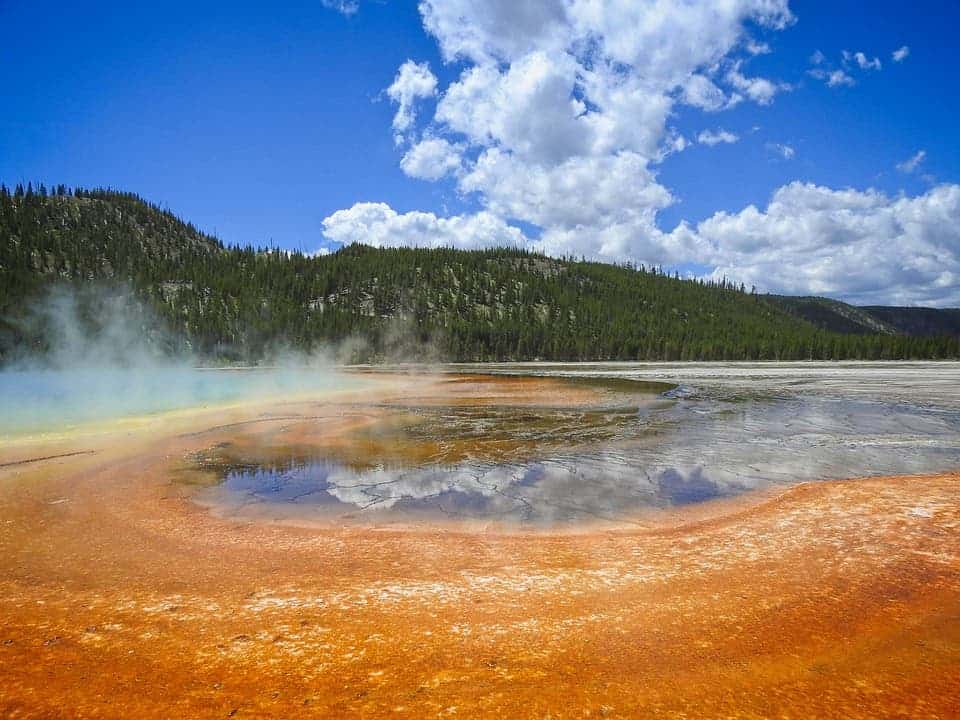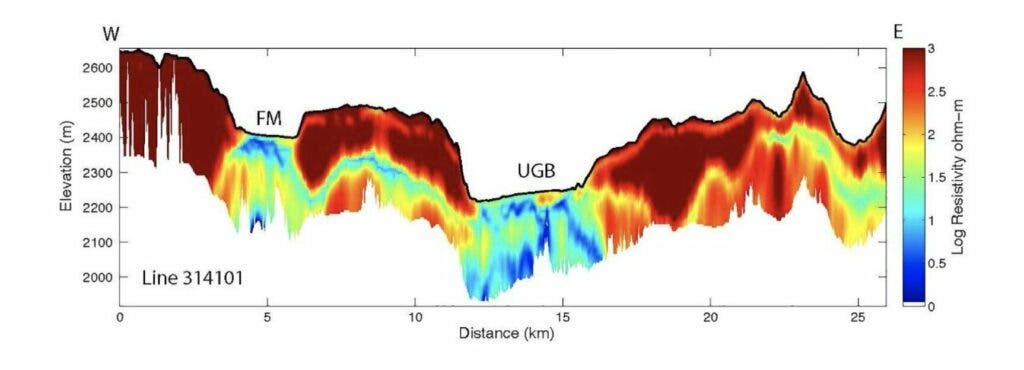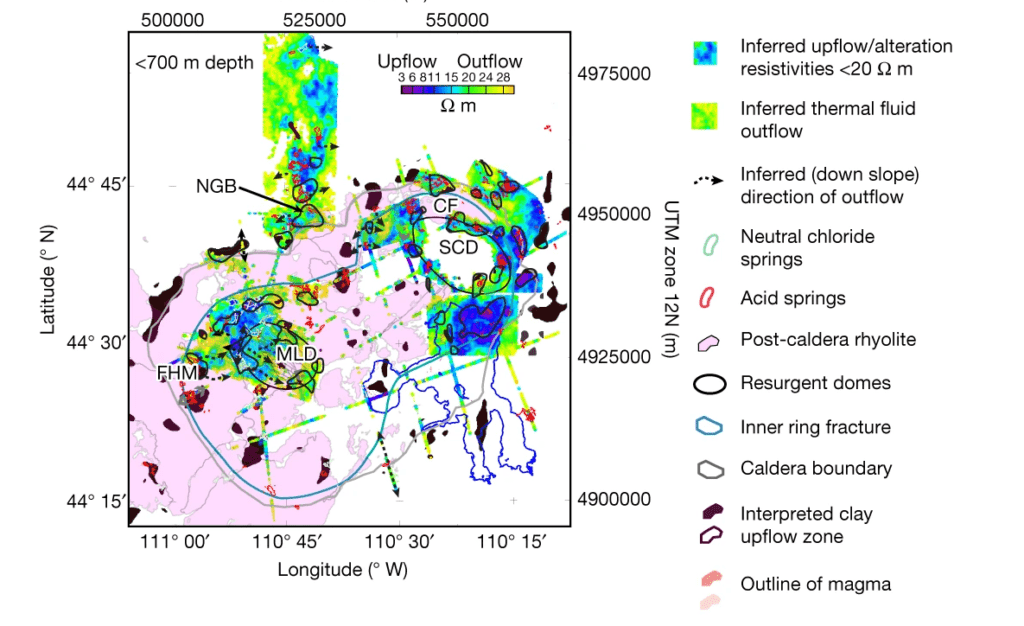
A mystery sandwich
Researchers have long suspected that the Yellowstone hotspot is linked to a mantle plume — a region of the mantle that is hot and buoyantly upwelling. These plumes, which can extend thousands of kilometers down into the mantle, can produce violent effects on the surface, triggering major volcanic eruptions and heating groundwater. But where does the water come from?
In a new study, researchers have mapped the groundwater that feeds Yellowstone’s hydrothermal activity, as well as its river network. Precipitation and groundwater seep into the geothermal “plumbing” of Yellowstone, but following the pathways of this subsurface water is harder than you might think.
We tend to visualize groundwater just like running rivers or lakes, but below the surface — that’s not the case. Water flows through connected porous rocks, and when it comes across impermeable rock, it shifts and changes, and researchers have struggled for some time to map the flow of water under Yellowstone.
“Our knowledge of Yellowstone has long had a subsurface gap,” study co-author W. Steve Holbrook, head of the Department of Geosciences at Virginia Tech University, said in a statement. “It’s like a ‘mystery sandwich’ — we know a lot about the surface features from direct observation and a fair amount about the magmatic and tectonic system several kilometers down from geophysical work, but we don’t really know what’s in the middle.”
Water changes the physical properties of the rocks it passes through, which makes it easier to detect underground. When researchers want to detect groundwater at one point (for instance, to find an aquifer to provide water to a community), they look for changes in the electrical properties of rocks. They do this by sticking metal electrodes into the ground and sending current through them, then measuring the current distribution; groundwater dissolves polar minerals and is very conductive, while impermeable rocks are much less conductive.
That’s fine and well if you want to detect water in a single point or a small surface, but with a caldera that measures 43 by 28 miles (70 by 45 kilometers), you need something that can map on larger scales.

Fingerprinting water
To carry out a large-scale mapping of the Yellowstone area, researchers used a big electromagnet known as SkyTEM. They attached it to a helicopter and then flew over the area hundreds of times, on profiles spaced 250-450 meters (820-1467 feet) apart.
In addition to knowing that groundwater is a much better conductor than dry rock, the researchers can also differentiate between magma and bedrock based on their magnetic properties, which enables the team to map how the magma is interacting with the groundwater system to create the stunning geological features we see on the surface.
“The combination of high electrical conductivity and low magnetization is like a fingerprint of hydrothermal activity that shows up very clearly in the data,” said Holbrook. “The method is essentially a hydrothermal pathway detector.”
Armed with the results and what we already knew about the caldera from boreholes and previous studies, the team was able to create the most comprehensive hydrothermal map of Yellowstone to date. It’s not perfect, the resolution is still not great and many details can’t be resolved, but the map helps make sense of some phenomena we’ve already observed.
“One of the unique aspects of this dataset is its extensive coverage of this huge system,” Holbrook added. “We were able not just to look deep beneath the hydrothermal features, but also to see how adjacent features might be connected in the subsurface across great distances. That’s never been possible before.”

Unsurprisingly, broad regions are covered with geothermal water, especially beneath the geyser basins. But what’s interesting is that these areas aren’t necessarily directly below the geysers. Sometimes, they are capped by impermeable rocks and in many cases, the hot water moves upward only through faults and fractures.
In addition to feeding into geysers, some of this thermal water moves horizontally along permeable rocks. In some instances, hot water from several areas interacts before creating a geyser, which could have implications for the chemistry and circulation of geyser water — and consequently, on the very resilient creatures that live in or around it.
“That might have implications for the co-evolution of thermophilic bacteria and Archaea,” Holbrook said. “The notion that airborne geophysical data could illuminate something about the life of microscopic organisms living around hot springs is a fascinating idea.”
The data set is so comprehensive, the researchers say, that there’ll be plenty more to uncover from it.
“The data set is so big that we’ve only scratched the surface with this first paper,” Holbrook added. “I look forward to continuing to work on this data and to seeing what others come up with, too. It’s going to be a data set that keeps on giving.”
The study “Geophysical imaging of the Yellowstone hydrothermal plumbing system” was published in Nature.






